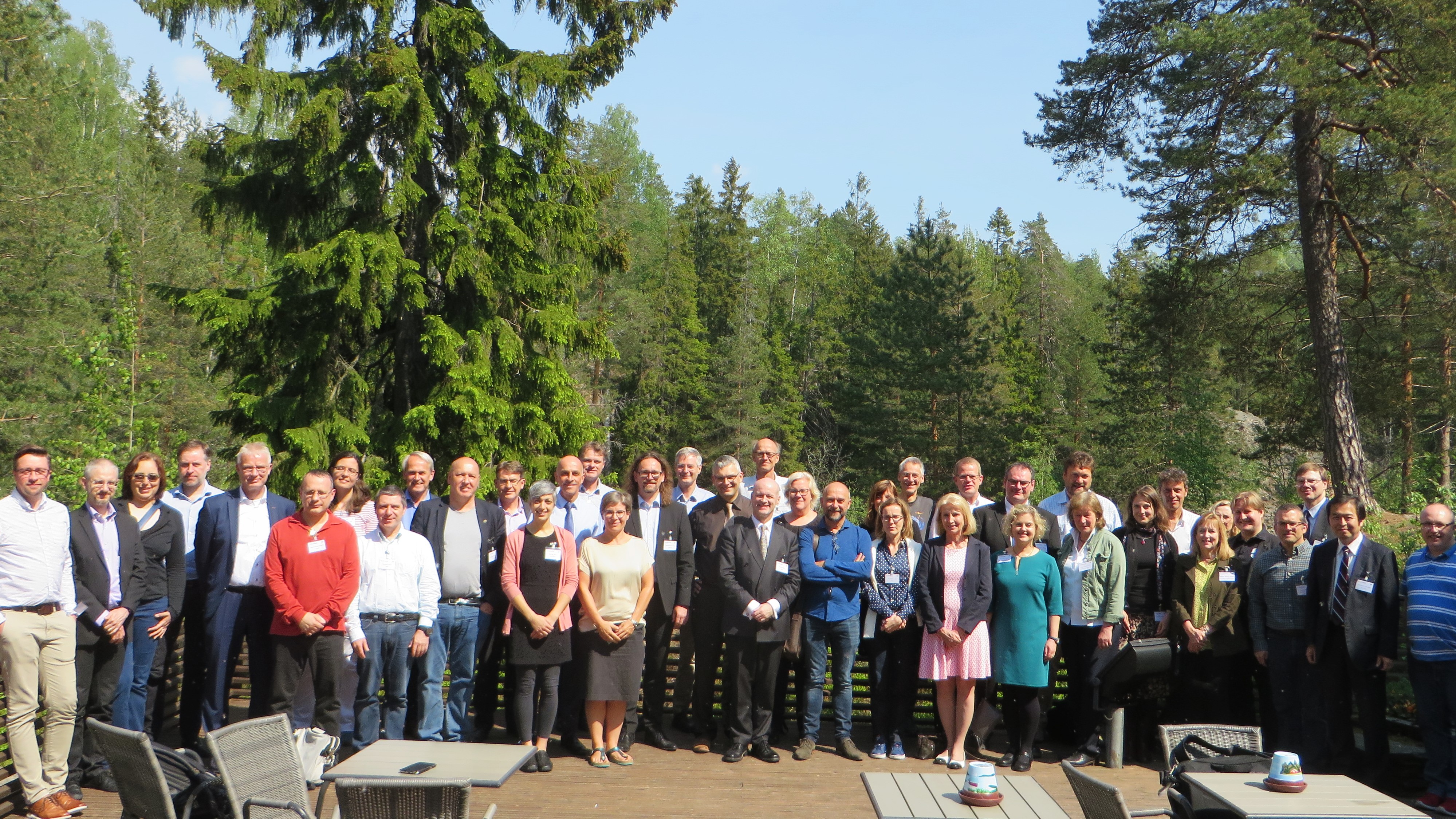
Animal-free risk assessment strategies
University of Konstanz researchers and international partners from the EU-ToxRisk project discuss new non-animal approach to hazard and safety assessments with regulatory experts
In the context of an international workshop organised by the EU-ToxRisk project in Espoo (Finland) on 21 and 22 May 2019, researchers from the European Center for Alternatives to Animal Testing (CAAT-Europe), which is based at the University of Konstanz, and their colleagues from the EU-ToxRisk project discussed a new non-animal risk assessment strategy involving multi-dimensional information from many sources – in the so-called read-across procedure – with experts from a range of European regulatory bodies.
CAAT-Europe coordinates transatlantic activities to promote the development of new and improved methods in toxicology, to be a partner in strategy development, to provide platforms for different stakeholders, to exchange ideas, and to support the 3R’s (refinement, reduction, replacement) principle of humane science in different ways.
It is a key partner of the EU-ToxRisk consortium, which receives funding through the European Union’s Horizon 2020 Research and Innovation Programme. As an “Integrated European ‘Flagship’ Program Driving Mechanism-based Toxicity Testing and Risk Assessment for the 21st Century”, its main goal is to achieve a paradigm shift in toxicological testing towards human-relevant, animal-free and mechanism-based hazard description and safety assessment. Combining advances in cell biology, omics technologies and computational modelling, the 39 partners from academic, regulatory and industrial backgrounds work on the development, evaluation and implementation of animal-free New Approach Methodologies (NAM) in modern toxicology. CAAT-Europe has a leading role in interacting with relevant regulatory, academic and industry stakeholders and in disseminating the project’s results, for instance through publishing scientific reports, coordinating conference sessions and organising workshops like the one in Espoo.
Towards animal-free hazard and safety assessments
One of the most promising new risk assessment strategies is the read-across approach, which assesses new compounds by comparing them to the toxicological data of other chemicals with similar structural or physiochemical properties – a method that is frequently rejected by regulatory agencies because the associated uncertainties, such as the level of similarity among the compounds in terms of toxicokinetics and toxicodynamics behaviour, are considered too extensive.
To address this issue, EU-ToxRisk researchers developed an altogether novel read-across approach, introducing the support of NAM-generated (in silico and in vitro) data. During the workshop, a total of five scientifically advanced case studies developed by EU-ToxRisk, the Integrated Approaches to Testing and Assessment (IATA) programme of the Organisation for Economic Co-operation and Development (OECD) and the National Institute of Health Sciences (NIHS) in Japan were discussed. The overall aim was to collect scientific and regulatory expert feedback on various read-across scenarios, which will serve as input for an EU-ToxRisk advisory report on NAM-supported read-across. Adding to existing documentation published by the OECD and the European Chemicals Agency (ECHA), this report will target the broader toxicology community and will contain practical instructions on the application of read-across methods in different regulatory contexts.
The researchers hope that it will help to improve the quality of read-across submissions and to increase the acceptance rates of non-animal approaches: “We are proud that this crucial event proved successful and remain confident that its results will help change the regulators’ mindset with regard to NAM-based risk assessment”, comments Professor Marcel Leist, co-director of CAAT-Europe and Professor of In-Vitro Toxicology and Biomedicine in the Department of Biology at the University of Konstanz.
Ultimately, the goal is to provide answers to the question as to where and how NAMs can support a read-across problem formulation, to identify areas that contain data gaps, to suggest how these gaps can be filled and to provide technical guidance on how these measures should be presented in a read-across regulatory dossier.
Facts:
- Professor Marcel Leist from the Center for Alternatives to Animal Testing (CAAT-Europe) at the University of Konstanz and members of his team involved in international workshop promoting new animal-free risk assessment strategies
- CAAT-Europe coordinates transatlantic activities to promote the development of new and improved methods in toxicology, e.g. through New Approach Methodologies (NAM)
- Novel NAM-based animal-free read-across procedure for hazard and safety assessments presented to international regulatory experts
- Part of the EU-ToxRisk project, which seeks to achieve a paradigm shift in toxicological testing towards human-relevant, animal-free and mechanism-based hazard description and safety assessment
- EU-ToxRisk consortium funded through the European Union’s Horizon 2020 Research and Innovation Programme in the amount of 30 million euros (2016-2021)
- Workshop took place on 21 and 22 May 2019 in Espoo (Finland) and involved researchers and regulatory experts from around the globe
